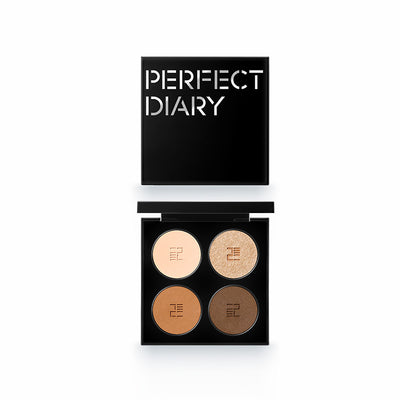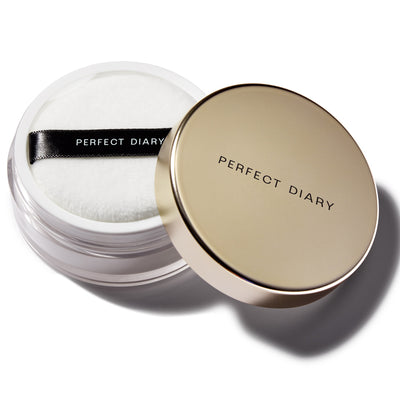A Comprehensive Guide to All Shades of Foundations
We are going to discuss all shades of foundation in the market and how to select those shades for your skin tones and undertones. Read till the end to master the shades of foundations and also discover our recommendations.
Introduction
Finding the best foundation for your skin tone can be a bit tricky, but it's not as hard as you might think. The key to finding your perfect shade is knowing what type of foundation you like and how the product should feel on your face. We'll go over those things in this post and everything about all shades of foundation so that when you're ready to shop for a new foundation, you'll know exactly what to look for!
Shade matching is where you take a sample of your skin and match it with a foundation shade. This can be done in many ways, but the easiest way is to find a foundation that matches you best. You can take a sample of your skin by using some sort of tool (like a brush) or by rubbing two pieces together without any application product on them at all. If there's no product on them at all, then this will give you an idea of what color they are naturally; however if there is some product on them already (for example if you're using concealer), then it might show up differently than when there isn't any product at all.
All shades of Foundation are usually named for the tone of your skin.
When you go to the store to buy foundation, you might notice that the shades are named for the tone of your skin. There are varying tones of skin, and foundation shades are named for these tones. The names of these tones are usually fair, light, medium (or medium/fair), tan/medium (or medium/tan), and dark/deep (or deep). Deep is a darker shade of tan, so if you're trying to achieve this look, pick up a bottle of deep foundation. If you want something even darker than that, try dark foundation. We recommend checking out the Nourishing Essence Foundation from Perfect diary and all its shades to get the best results.
If you have medium skin and want to match your foundation with your natural skin tone, then a medium shade is for you. Medium shades have a yellow undertone which makes them ideal for people with olive or light brown skin. If you have warm undertones (yellow), then this type of foundation will be most flattering on you. Light skin tones are named for the lightness of their color, which is a pinkish tone. They're the most common skin tone in the world, and they can be fair or olive. People with light skin have yellow undertones that give them a warm appearance.
A medium foundation is a great choice for most people, especially if you have olive skin or yellow undertones. It's also a good fit if you have brown hair and green eyes. The thing about medium is that it's not too dark and not too light--it's just right. Fair is for people with very light skin, such as those with a fair complexion and blond or red hair. If you have cool undertones to your skin (pinkish or blue), this foundation shade will be a great match for your coloring.
There are several ways to find the right shade of foundation for your skin tone
Try on different shades of foundation and look at yourself in natural light. If you can't get out of the house, try holding up a mirror against the window or taking a selfie with natural lighting.
Use concealer as an indicator for matching your skin tone if you don't have time to experiment with different shades of foundation; this method works best if your undertones are neutral or cool-toned (blues and purples).
Buy one shade lighter than your natural complexion so that it blends into your face seamlessly when applied over blemishes or discoloration on the face (like acne scars). This is especially helpful if you want an airbrushed look without having to use heavy powder products like bronzer or highlighter powders underneath the foundation itself.
Knowing your undertone helps you match your foundation. There are three undertones: warm, cool, and neutral. Warm skin tones have yellowish or golden undertones; cool skin tones have pink or blue undertones; neutral skin tones have red or greenish undertones. Understanding your own skin's natural coloring will help you choose the right shade of makeup that accentuates it in a flattering way.
Neutral skin tones have pink or red undertones. This means that if you look at your forearm in the sunlight, it will be difficult to see any green or blue undertones. Instead, you'll see a lot of pink or red on your skin.
If you have cool skin, you've probably noticed that it's not quite as pink as the other two types of tones. Cool skin tones have a blue or pink undertone and will typically have fair skin with rosy undertones. These people are often pale in color, with blue eyes and blond hair (or red hair). If your complexion is more on the olive side then this could be another indication of cool undertones.
Warm skin tones have yellowish or golden undertones. They look better in warm colors like yellow, orange, and red. You can also wear gold jewelry on warm skin tones because it complements their natural glow.
If you are buying foundation at the drugstore, try on a few shades in different lighting and see which one looks best on you. The lighting in any given store can be tricky because it's usually dimmed so customers don't have to squint when they look at products (and therefore buy more). It's also important not to trust just one area of color-matching when choosing which shade of foundation works best with your complexion - take into account all areas where light hits (cheekbones, forehead) as well as those parts that may be darker than others (around eyes). We recommend buying the Supreme Nude Natural Flawless Hydrating Liquid Foundation from Perfect Diary to get long-lasting and perfect finish results.
What is the most necessary thing to know about foundations?
The most important thing to know about foundations is that they can be used to cover up a variety of skin conditions, including acne and rosacea. If you have oily skin, it's best to choose a matte or pressed powder foundation. These will help absorb excess oil without giving your face an overly matte finish; they also tend to last longer than liquid or cream formulations. If you have dry skin and want something with more moisture in it, opt for liquid or cream formulas instead of powders (since these last longer on the face).
Conclusion
When it comes to all shades of foundation, we recommend going with your instincts rather than taking unsolicited advice from friends or influencers. The best way to choose the right foundation for your skin is through trial and error. If you're unsure about which color would look best on your skin tone, try out different shades until you find one that matches perfectly. There are a lot of different types of foundations available today, so be sure to take some time before making this decision!





















